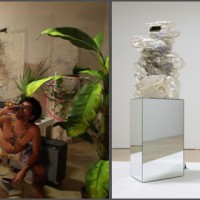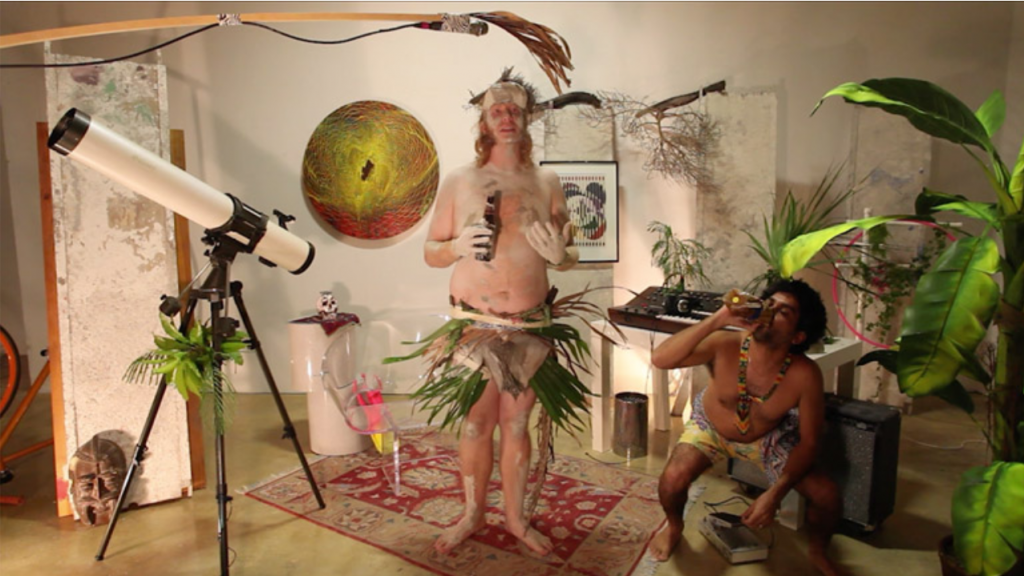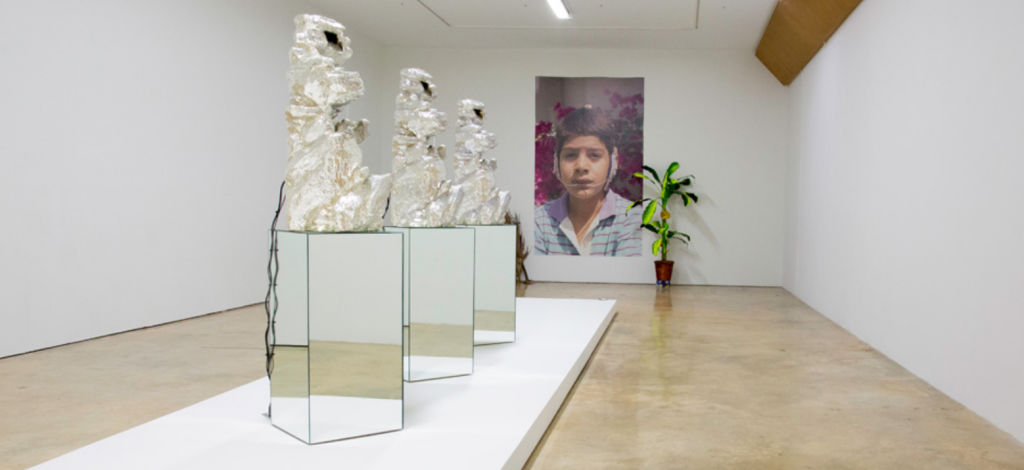Back on Earth, a tragicomedy in two parts


Left: Brandon Opalka, The Inexplicable Universe, told by Jay Dude, 2014, Video still. Right: Hugo Montoya: BACK ON EARTH, a tragicomedy in two parts, installation view. [courtesy of Emerson Dorsch, Miami.]
The two artists have come together to create an exhibition revolving around the common personal struggle of searching for the meaning of life (or lack thereof). Their exhibition tells “a story that is not meant to be understood—there are only varying levels of humor.” At the front lobby of the gallery we are faced with our first work by Brandon Opalka called Waxy Pollock (a) displayed next to a rack of t-shirts on sale for forty dollars each. The painting is 81 x 61 inches and made entirely of melted wax in organic formations. Opalka purposely uses what he considers a heaven-and-earth tone color palette. To the right there is a space dedicated to Opalka’s paintings, installations, and video works.

Brandon Opalka: BACK ON EARTH, a tragicomedy in two parts, installation view. [courtesy of Emerson Dorsch, Miami.]

Brandon Opalka: The Inexplicable Universe, told by Jay Dude, 2014, video still, 34 minutes. [courtesy of Emerson Dorsch, Miami.]
Directly adjacent to the tunnel exit the viewer is overwhelmed with a large-scale 125 x 75 inch poster of a child wearing headgear. The child in question is actually Hugo Montoya. According to the gallery director, Montoya’s friends had stolen the picture and redistributed it amongst their group. In response, Montoya decided to find the negative of the photo and re-purpose it for his exhibition. It is a statement about our digital information culture and the difficulty of deleting or destroying anything that has been posted to cyberspace. Once something is posted in social media, the only way to reclaim it is to redefine it.
The lighting in this room is much brighter than that in Opalka’s space. Each object is individually illuminated to show opulence and humor all at once. The majority of the room is taken up by a plinth called, Whatever you want to call it, inspired by works of art (seamless psych wall, quarter pipe), displaying two works. The first, Work of Art, presents chrome fountains on mirrored glass pedestals. The second, I’m rotting, eat me, contains a glass tabletop supported by Goya black bean cans. Atop the horizontal glass is a chrome banana holder with bananas that read Fucking Hugo Montoya, and Don’t Stop the Hustle…. Montoya uses many man-made materials and displays them in such a dramatic fashion that one cannot help but find the piece satirical. The ramp he used to display the works is inspired by the marketplace now and how one cannot just simply take a picture of something on a table, but must go to elaborate lengths to sell an object. The Goya beans were a nice local Miami touch as the Spanish brand Goya makes a stronger connection to Miami’s Hispanic community than an American brand like Campbell. Also, Montoya is appropriating Andy Warhol’s famous use of Campbell Soup cans, and replacing the Scottish-American brand name with a Spanish brand name, which also happens to be the surname of the renowned artist Francisco Goya. Both artists play off of each other to show different types of irony in life. Whenever a viewer thinks they understand a work, there is new information that completely disproves the original concept. While Opalka poses these ironies in a more comforting and sincere manner, Montoya hits the viewer head on with slapstick, palpable humor. All in all, the experience is one of interaction. The viewers are forced into a world so similar to their own in theory, but so palpably unrealistic. It is a journey into the mind that really challenges the audience.


